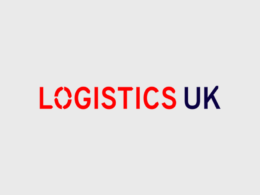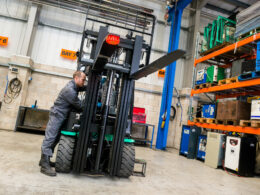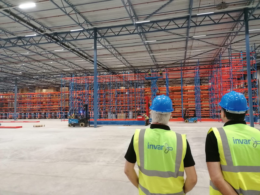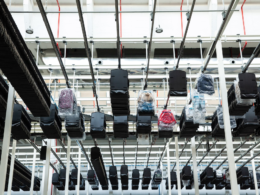An article by Alex Buckley, General Manager of EMEA and APAC Operations at DispatchTrack.
A new report from the Office for National Statistics (ONS) published last week, on April 11th, shows the transport and logistics sector has expanded far faster than any other industry, beating retail, manufacturing, and construction. This is largely due to the ecommerce boom and increase in online sales since the start of the pandemic. As delivery demand in sectors like food, furniture, fashion, and electronics has grown, consumer expectations for speed and reliability have only increased. This puts pressure on logistics organisations across the board to find smarter ways to get the right goods to the right place at the right time.
Against this backdrop, there is a huge opportunity for organisations to benefit from smart planning technology with the ability to create real time visibility and data driven insights. Not only can the right technology help you provide great delivery experiences for customers, it can also make your logistics operations more sustainable by cutting CO2 emissions.
How AI Impacts Logistics
One of the defining features of the modern logistics industry is its complexity, and as the sector continues to see rapid growth that complexity is only going to get more intense. Whether you are delivering to end consumers or distributing to other businesses, you need a way to cut through that complexity in order to make the most out of growing demand.
With AI-powered route optimisation, you can do exactly that. AI enables you to create last mile delivery routes that factor in not just defined business constraints (van capacity, driver availability, etc.) but things like historical traffic data and learned service times for different types of deliveries. This enables you to optimise routes on a much more granular level than a human planner could do unaided. This has two important impacts:
- More efficient routes enable you to complete more deliveries per day. In a rapidly growing sector, this helps you do more with existing capacity.
- Optimised routes also enable you to drive fewer miles per delivery, thereby reducing fuel consumption and decreasing your carbon footprint.
In this way, AI-powered technology can be a catalyst for greener and more efficient logistics operations—two must-haves in this rapidly expanding industry.
The Power of Supply Chain Visibility
Another way of cutting through the inherent complexity of modern logistics is to adopt technology that empowers real-time visibility throughout the supply chain. Making this happen is largely a matter of connectivity: your various enterprise technology systems all need to connect fluidly to ensure complete, accurate, and up-to-date data at every touchpoint.
This is especially impactful once your last mile deliveries are already underway. Historically, this part of the supply chain has been something of a black box for all involved, with back-office teams having little insight into the status of a given delivery and recipients having even less. That is why it is more important now than ever to equip drivers with a way to automatically update dispatchers, managers, and customers throughout the delivery process. This gives you the ability to spot potential supply chain disruptions before it is too late to do anything about them. You can even further leverage the power of AI to help turn real-time delivery information into predictive ETA insights that can alert when a delivery is likely to miss the promised window.
In the event of a vehicle breakdown, for instance, real-time visibility lets you visualise whether there is a distribution centre nearby that has the necessary stock to enable a new van to reload and make up the would-be missed deliveries. Conversely, if a delivery is going to be late, it empowers you to actually call the customer and ask them if they need to reschedule.
Customer-Centric Growth
The combination of real-time visibility and active customer communication add up to a powerful impact: it prevents failed delivery attempts, saving you all the money, fuel, time, and extra warehouse usage that result from a second and third delivery attempts at future dates. This does not just speak to the power of visibility—it speaks to the value of customer engagement at every stage in the process.
The goal is to provide a great experience for the customer, and that means keeping them informed and engaged. When you can consistently deliver at the right time for customers—while providing them real-time visibility and constant communication—you can stand apart in a crowded field. Just as importantly, you can reduce failed delivery attempts and thus reduce your carbon footprint by driving fewer miles.
The trends shown in the latest Government ONS report give us every reason to believe in the continued growth of the UK’s logistics sector. The right technology—i.e., AI-powered technology designed around customer needs—will only make this sector grow further, presenting a huge opportunity for organisations to differentiate themselves in an increasingly competitive market.













